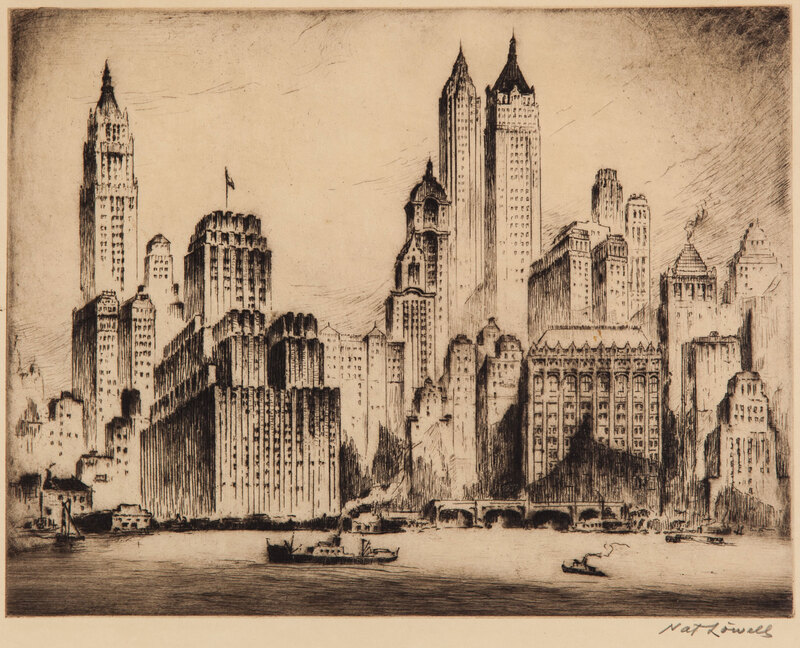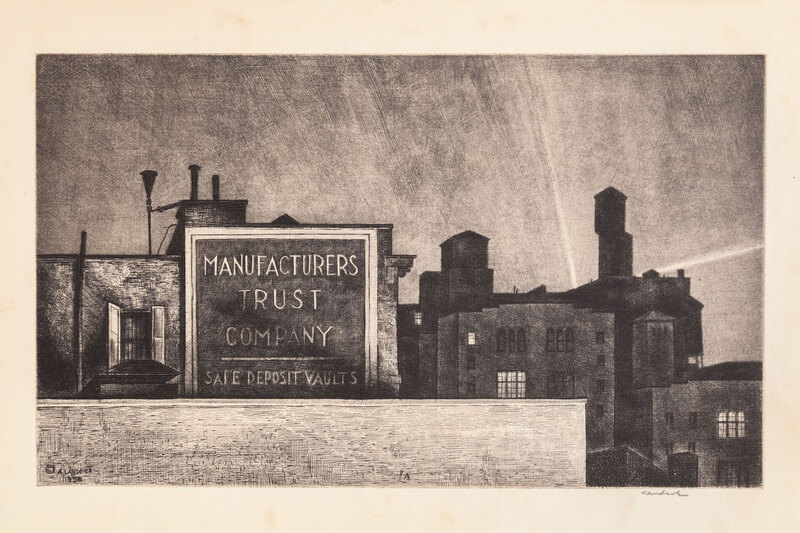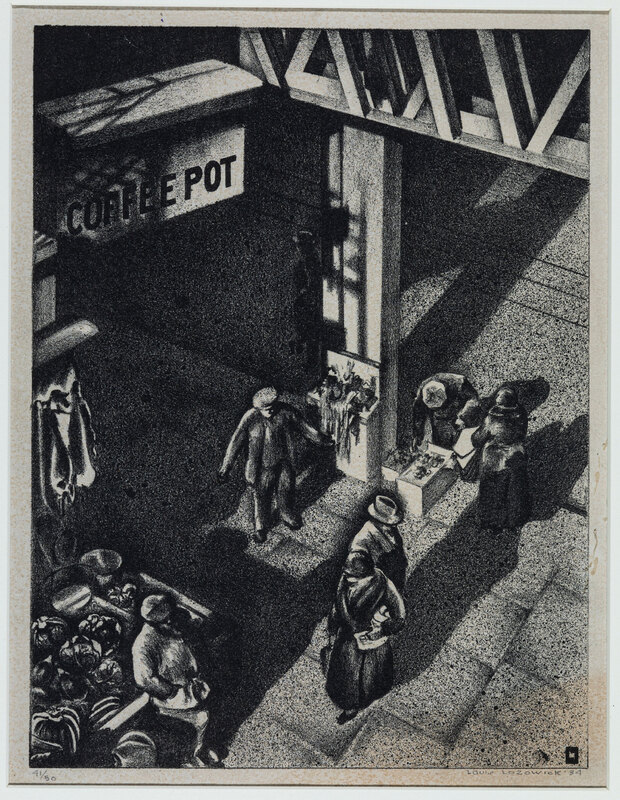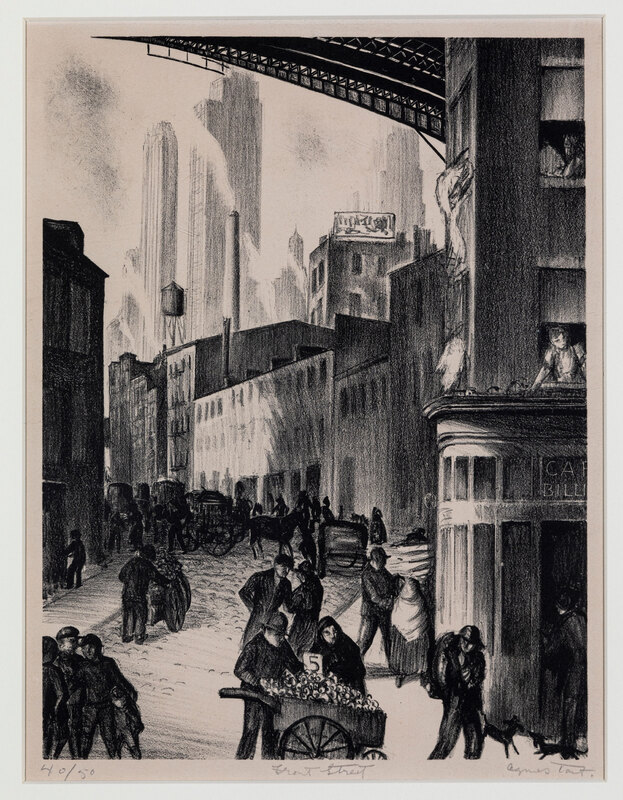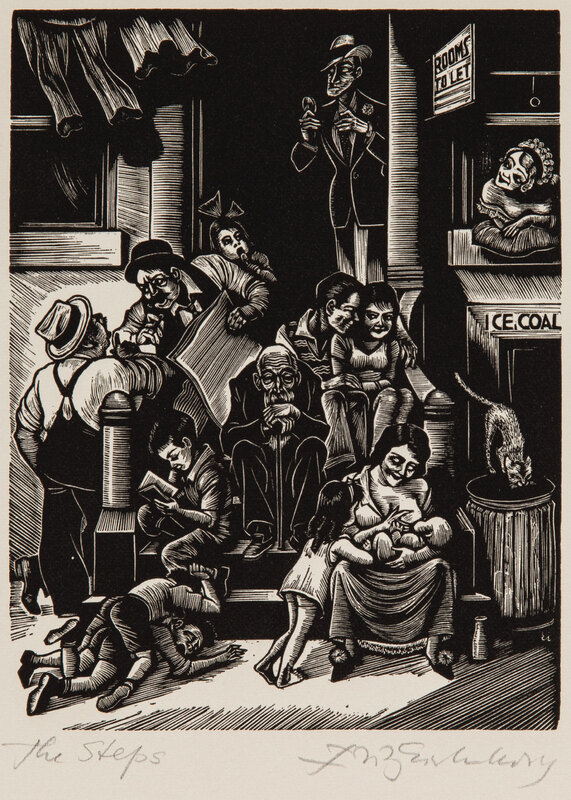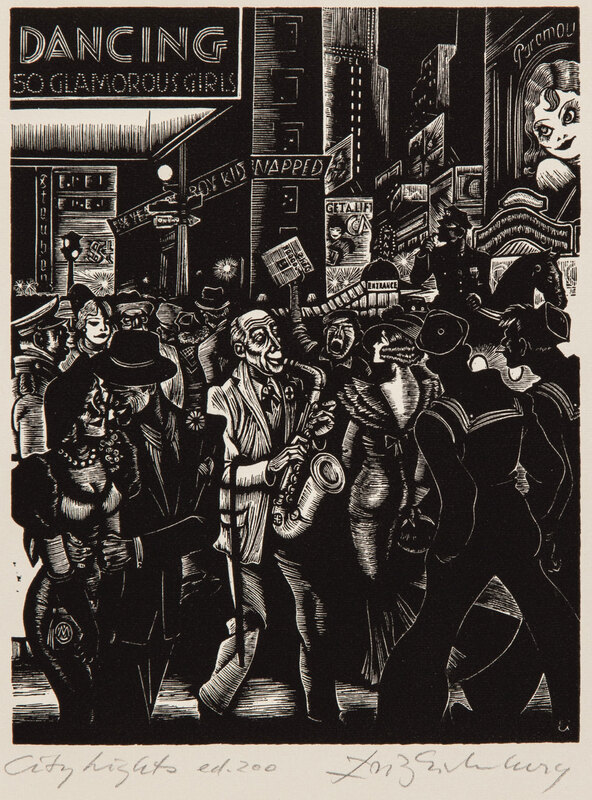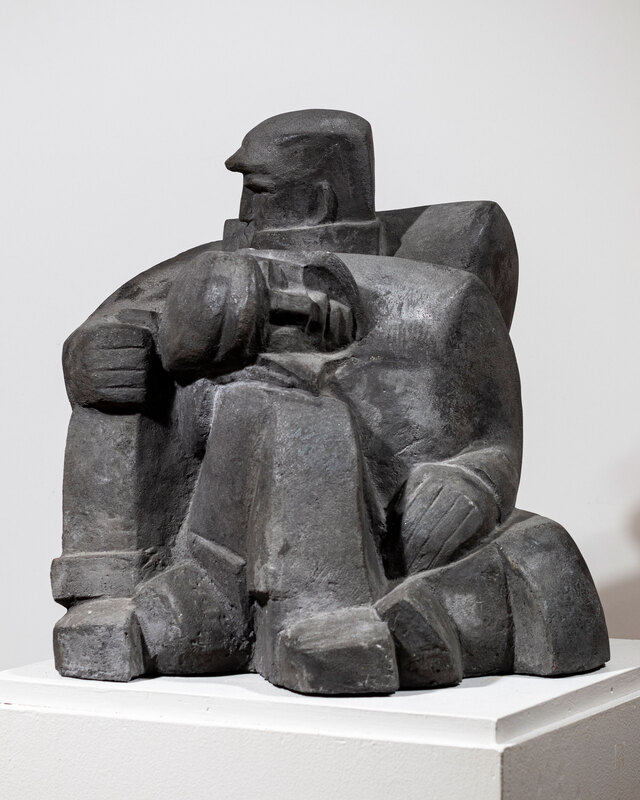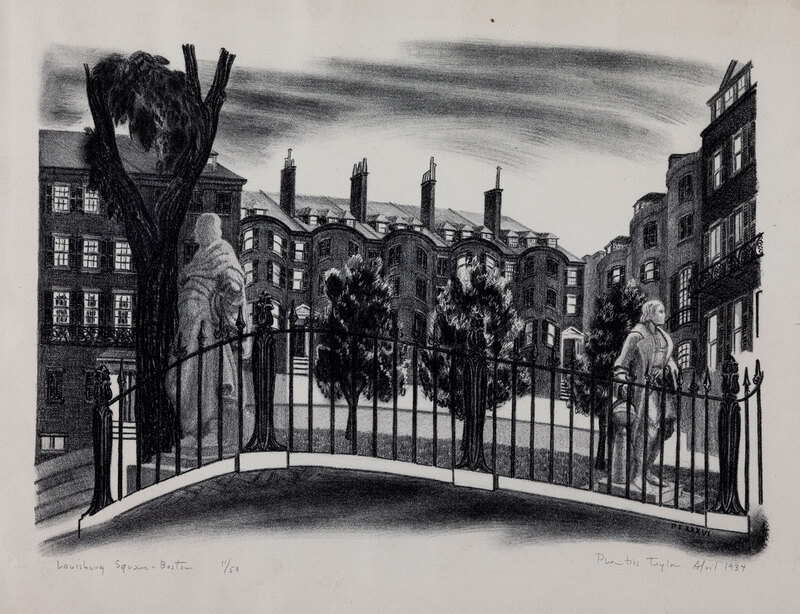City Life
The early twentieth century saw the emergence of a turn in artistic subject matter from depicting only the elite to acknowledging the growing immigrant population and working class. Artists celebrated cities and urban architecture, as well as ordinary folks on lively streets – scenes which became more politicized with the onset of the Great Depression.
The modern American city, with its soaring skyscrapers, its teeming immigrant neighborhoods and its glittering nightlife, only entered into the vocabulary of the nation’s artists in the early twentieth century. In the years prior to the First World War, a group of journalists-turned-painters, known as the Ashcan School, discovered a new range of subject matter by capturing New York’s working-class life rather than its elite, who had so frequently been the subject of artists and novelists in the previous century. Exploring the street life of neighborhoods like the Lower East Side, where many of the newly landed immigrants from southern and eastern Europe resided, these painters opened up a vein of themes that would continue to be mined by a younger generation through the 1930s.
We could say that representations of the city in this period fall into two broad categories. On one hand, we find the bird’s-eye view, the city seen as from a distance, grasped visually as a kind of architectural spectacle. In such views, buildings tend to predominate and the city’s inhabitants shrink to miniscule scale or disappear entirely. The mood is largely celebratory, reveling in the power and dynamism of the modern metropolis. On the other hand, we have what can be called the worm’s-eye view, the city at street level. Here, it is people and their lives as lived in the public space of the bustling street that capture the artist’s attention. Sometimes the emphasis is on the diversity of types—a sort of catalogue of urban fauna—and the density and energy of the city; other times on the isolation and loneliness that can be experienced even amid the crowd.
Neither bird’s- nor worm’s-eye view necessarily implied a particular political intention on the part of the artist. In the turbulent atmosphere of the Great Depression, however, with unemployment rampant and bread lines stretching for blocks, it became increasingly difficult to maintain the fiction of neutrality in one’s vision of the city. One important shift in the 1930s was, then, the development of an explicitly political vision of the city, as many artists committed themselves to progressive or even radical projects of political change. The curiosity of the Ashcan School, whose members in the early years of the century had first ventured into working-class neighborhoods like anthropologists exploring some unfamiliar land, gave way to solidarity on the part of artists with their urban subjects.
––TMD
Nat Lowell (American, born Russia, 1880 – 1956)
Manhattan Towers, ca. 1937
drypoint; 12 ½ x 17”
Binghamton University Art Museum, 2016.4.372
gift of Gil and Deborah Williams
Nat Lowell emigrated at an early age from his native Riga, Latvia—then part of the Russian Empire—to New York and would become well known for his etchings of his adopted home, seemingly never losing the immigrant’s admiration for the city that had welcomed him. In this print, we approach the southern tip of Manhattan across the waters of the harbor, perhaps on the Staten Island Ferry, whose Whitehall Terminal, along with what was then the Municipal Ferry Pier, is visible on the waterfront just to the right of center. Above them rise the skyscrapers of lower Manhattan, at that time the city’s business center; of them, only the Woolworth Building, on the left, remains standing today.
Published by the Associated American Artists—which marketed inexpensive fine-art prints as an “art for the people” beginning in 1934—Manhattan Towers captures the wonder, even sublimity, of the metropolis, pictured as a dense forest of towers, or as an almost sheer cliff face rising up from the bay.
––TMD
Armin Landeck (American, 1905 – 1984)
Manhattan Nocturne, 1938
drypoint; 9 ½ x 14”
Binghamton University Art Museum, 2016.4.19
gift of Gil and Deborah Williams
Interpretive text has not been prepared for this object.
Louis Lozowick (American, born Ukraine, 1892 – 1973)
First Avenue Market, 1934
lithograph; 15 x 10 ½”
Roberson Museum and Science Center, 1984R48
Interpretive text has not been prepared for this object.
Agnes Tait (American, 1894 – 1981)
Front Street, 1933-34
lithograph; 11 ½ x 9”
Roberson Museum and Science Center, 1984R47
In this view, we are standing at the northern terminus of Front Street in lower Manhattan, looking south toward the tip of the city. Here, under the Brooklyn Bridge, is a low-slung neighborhood of apartment houses and industry, of peddlers selling apples from pushcarts and horse-drawn wagons laden with goods that rattle down the cobblestone street, of smokestacks and water towers; we could still be in the nineteenth century. In the distance, the white skyscrapers of the modern city rise up, almost ethereal, into the sky, as if in another world. A native New Yorker, Agnes Tait brilliantly captured the contrasts found in the city.
She made this lithograph—a print technique she learned while studying in Paris in the mid-1920s—while working for the Depression-era Public Works of Art Project, likely in early 1934. Around the same moment, photographer Berenice Abbott (American, 1898 – 1991) was employed by the Federal Art Project to document similar scenes around New York.
––TMD
Fritz Eichenberg (American, born Germany, 1901 – 1990)
The Steps, 1934
woodcut; 12 x 9”
Binghamton University Art Museum, 2016.4.217
gift of Gil and Deborah Williams
Fritz Eichenberg was another immigrant to America, having been born in Germany around the turn of the century. He trained there as an illustrator and worked as an artist-reporter for Berlin newspapers through the 1920s; because of his Jewish heritage, however, he fled after Hitler’s rise to power in 1933 and immigrated to New York that same year. The Steps is among the very first prints he made after his arrival in the city and captures his fascination with the lives of everyday city-dwellers on Manhattan’s crowded streets. In an age before air conditioning or television, life was often lived in public spaces, particularly in the summer months. On the stoop of a working-class tenement, the full span of human existence is on view, from the infant nursing at its mother’s breast at the lower right, through childhood and adult romance, to the elderly man who sits quietly, resting on his cane, at the very center of the composition. This woodcut—Eichenberg’s preferred technique, of which he was a master—is packed with many such anecdotal details, down to a scruffy alley cat searching for food in a trash can.
––TMD
Fritz Eichenberg (American, born Germany, 1901 – 1990)
City Lights, 1934
wood engraving; 12 x 9”
Binghamton University Art Museum, 2016.4.216
gift of Gil and Deborah Williams
Interpretive text has not been prepared for this object.
Aaron J. Goodelman (American, born Russia, 1890 – 1978)
Homeless, 1936
cast concrete; 17 ½ x 16 x 15”
Roberson Museum and Science Center, 1978R7
During the 1930s, economic hardship at home and the rise of fascism abroad politicized many American artists, making them sympathetic to projects for radical change. Aaron J. Goodelman, who had emigrated from Russia to New York as a child, participated in leftist Jewish circles in his adopted city even before the start of the Depression, joining the Yiddish branch of the Communist Party in the 1920s and using his art to voice his political views. Homeless expresses his solidarity with the poor and downtrodden in its choice of subject, and reflects his progressive politics in its choice of style: an abstracted, modernist idiom derived from sculptors such as Jacques Lipchitz (American, born Lithuania, 1891 – 1973).
Goodelman made this work while employed by the Federal Art Project, which was created in 1935 to provide work relief for artists. The original plaster was exhibited at The Museum of Modern Art in New York in 1936 in an exhibition devoted to the Project’s first year.
––TMD
Prentiss Taylor (American, 1907 – 1991)
Louisburg Square, Boston, April 1934
lithograph; 11 ½ x 16”
Roberson Museum and Science Center, 1984R41.01
Interpretive text has not been prepared for this object.
